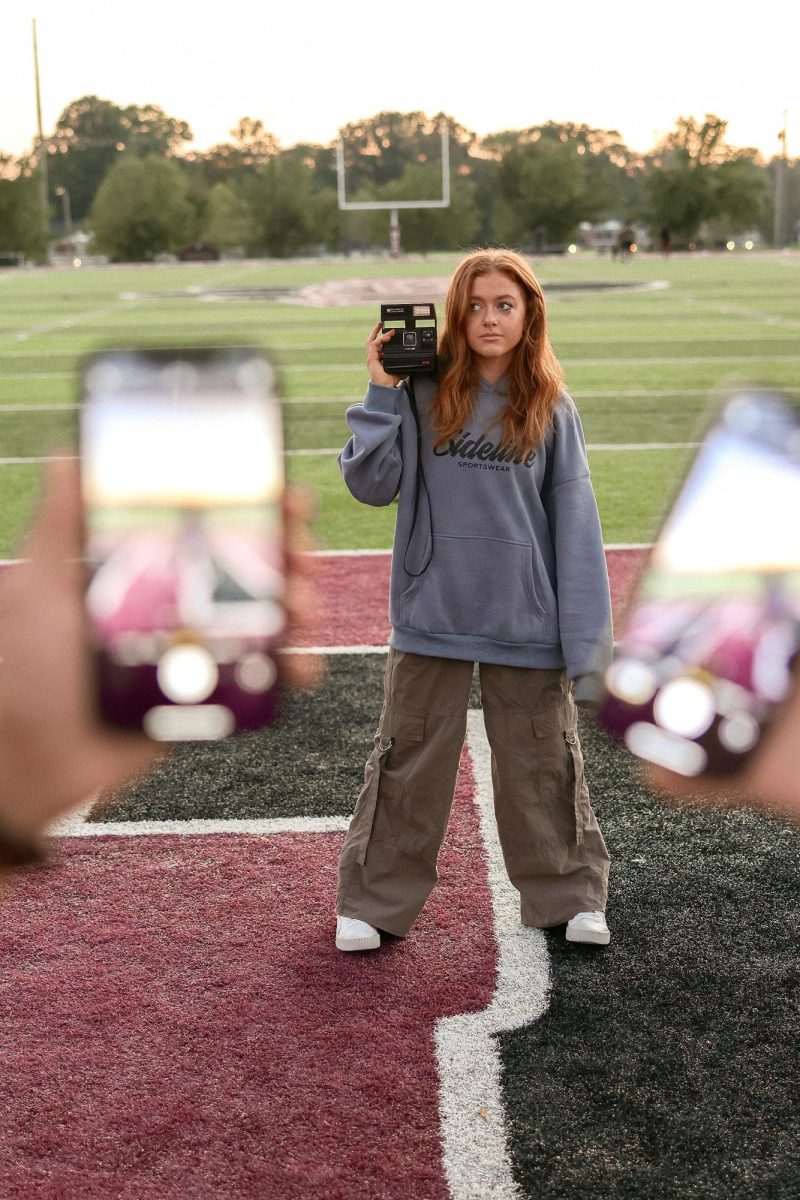Campbellsville experienced the “Great North American Eclipse” on April 8. Students came out early enough to save a seat on the patio outside Montgomery Library. People brought picnic blankets, cornhole tables, snacks and speakers. The CU community gathered as a family.
The partiality of the eclipse began at 1:48:37 p.m. EDT and lasted for two hours, 24 minutes and 15 seconds. Experts say we will not see something like this until 2044. Amazingly, during an eclipse, the moon’s angular size matches closely the sun’s angular size, which is extremely rare.
Soledad Trigo, a student at CU, describes this experience as unique.

“I have never had a chance to experience an eclipse,” she said. “I loved how everyone took time out of their days to hang out together, get together as a community and watch the eclipse. This is a unique experience that I won’t be able to experience again with the people I was with.”
Campbellsville University’s science department and CU Student Life got together and organized a small event on campus to provide students with eclipse glasses so they could enjoy and experience this unique opportunity. Students must use eclipse glasses since the Sun was incredibly bright and could potentially damage the eyes.
Dr. Steve Alston, physics professor at CU, wanted to create an environment where students were safe and informed.
“We did this in 2017,” he said. “It was natural that we would provide a little information to guide the students and give them the equipment they needed to enjoy this beautiful experience, even though we ran out of glasses in 20 minutes. It is a big event.”
The science department had approximately 350 eclipse glasses, and a pamphlet to give students information about the eclipse.
At CU, the maximum eclipse reached 96% of the sun’s surface. For some background, a solar eclipse results from the Earth moving into the moon’s shadow from the sun’s light. Earth, moon and sun’s positions cause eclipses.
Alston explained how amazing an eclipse is, and why people should understand the science behind it.
“The Moon orbits at a distance and its size is just right for the eclipse to occur at the right size,” he said. “The same angular size as the sun. People don’t understand how incredibly rare that is. The probability and the chance of how rare it is that we have the moon just exactly right for this eclipse is unbelievable.”
Dr. Indra Dev Sahu, assistant physics professor at CU, describes the uniqueness of an eclipse.
“An eclipse is known as ‘nature’s gift,’” he said. “Where people can think of how our universe is and how beautiful the scenario we have on Earth works on eclipses.”
Sahu attended the event also to help students answer some questions they may have about the eclipse.
“I explained to several students the meaning of an eclipse,” Sahu said. “Most students don’t know what is happening. It was good getting some conversations with students and discussing this amazing experience.”
Eclipses happen more often than we imagine, but in the regions where most people live on Earth, this is rare.
“It is a great experience for people and also for the scientific community,” Sahu said. ”There are lots of experiments happening in this period, in order to determine and study science more.”






















